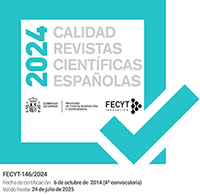La representación cartográfica del mundo en la Edad Media
DOI:
https://doi.org/10.5944/etfiii.17.2004.3717Palabras clave:
Cristianismo, simbología, interpretación religiosa, Islamismo, libros de viajes,Resumen
El Cristianismo y el Islamismo son dos paradigmas no sólo en el orden religioso y moral sino también en el científico, es decir, en la interpretación del origen del mundo y consecuentemente en la representación del mismo. Ya no se guia el hombre por la razón y la experiencia, por ejemplo, para explicar los movimientos de la tierra. Como creyente se ve obligado a seguir las pautas que le marcan los textos sagrados. La investigación deja paso a la fantasía y la cartografía se transforma en un mosaico de símbolos no siempre fáciles de interpretar. El Cristianismo rompe con la tradición clásica y vive una primera fase de absoluta simplificación cartográfica, como se comprueba en los mapamundis en 0-T y en los Beatos. En el Islamismo, por el contrario, se deja sentir desde el primer momento la influencia helenística, cuyos pueblos y bibliotecas han caído bajo el dominio de aquél.
Christianity and Islamism are two paradigms not only at a religious and moral level but also at a scientiflc one. That is, concerning the origins of the world and subsequently its representation. Man no longer explains the Earth movements based on reason and experience, but as a believer he feels drawn to following the guidance indicated by the holy texts. Investigation gives way to fantasy and cartography changes into a wealth of symbols not always easy to interpret. Christianity breaks off with classical traditions and begins a phase of absolute cartographic simplification, as one can see on the worid maps in 0-T and in the Beatos. Islamism, on the other hand, showed a Greek influence from the beginning, whose peoples and libraries have now fallen under the domain of the former.







